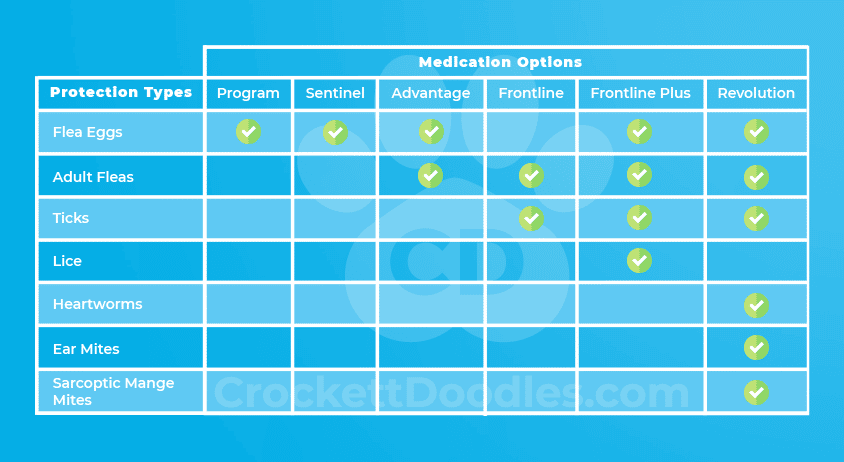Effective Flea and Tick Prevention

Flea and tick prevention is easier than ever
The days of treating your pet’s flea and tick infestations with dips, sprays, powders and bombs every two weeks are over. Thanks to the work of parasitologists, simple monthly treatments of topical or oral medications eliminate a lot of the work necessary to get rid of those tiny pests.
Fleas and ticks are dangerous disease carriers, and they can make your dog’s life miserable. Fleas can transmit tapeworms and cause itchy allergic reactions, which can lead to scratching, hair loss and infection. Ticks can carry the bacteria that cause Lyme disease, a serious condition characterized by lameness, swollen joints and fever.
Fleas get their nutrition by ingesting your pet’s blood, and a large infestation can cause anemia and other medical disorders and, in some instances, death due to blood loss or complications of a flea-related illness. That’s why it’s especially important to keep your dog flea-free.
Potent Treatments Keep the Pests Away
New medications prevent infestations by killing the adult insects or by keeping their eggs from hatching. Here’s what you need to know about the most common flea and tick preventives in your veterinarian’s medical chest.
- Program and Sentinel tablets both contain lufenuron, a chemical that prevents flea eggs from hatching but does not kill adult fleas. This compound doesn’t work against ticks.
- Frontline, available in a dab-on formula or a spray, uses fipronil to wipe out adult fleas and may control ticks. For flea control, it can be used every three months; for tick control, it should be administered once a month. Frontline continues to work after you give your pet a bath or if he goes for regular swims.
- Frontline Plus is similar to the original Frontline but has new active ingredients that kill both lice and unhatched flea eggs on your pet.
- Advantage (imidacloprid) is a topical treatment that kills adult fleas and prevents reinfestation for up to one month. Bathing your dog will reduce effectiveness. Advantage does not work against ticks.
- Revolution (selamectin) is the latest topical medication in the arsenal for monthly flea and tick prevention. It guards against heartworms, flea eggs and adults, ticks, ear mites and sarcoptic mange mites.
If Your Dog Has Been Infested
If you started using one of these flea medications after you discovered a flea infestation, you may need to treat your house too. Why? Fleas can live for several months in your house and yard because flea eggs stay alive in your carpet, cushions and drapes for years.
Your dog isn’t the only one at risk. People can get irritating flea bites too. Ridding your home of these pests takes time and a concerted effort. Here’s what to do.
To get rid of housebound fleas, use professional flea foggers and sprays for hard-to- reach spots, following manufacturer directions. Clean the flea eggs out of your house by vacuuming several times in a week, dumping the contents of the vacuum in an outside trashcan and wiping the vacuum compartment/container with a damp paper towel. Also regularly clean your dog’s favorite hangouts and wash her bedding.
If your dog spends time outdoors or in a kennel, be sure to wash the bedding. Spray doghouses and kennels with an indoor flea spray, following manufacturer directions, and let all treated areas dry before you let your pet back outside.
If your flea problem is recurring, you may need to treat your yard as well. Use a professional, concentrated yard spray. Many of these sprays attach easily to the end of a garden hose for application. It’s especially important to spray moist and shaded areas of your yard. But be sure not to use any environmental treatments directly on your pet and ensure the area is dry before letting your dog outside.
Ridding your pet and her environment of these hardy pests is a tough job, but you’ll rest easier knowing your dog doesn’t have to endure the maddening itching and scratching or the diseases these parasites can inflict.
(article from Petco.com) (chart from Crockett Doodles)
Also check out the different items listed under Protection on our Shopping List





